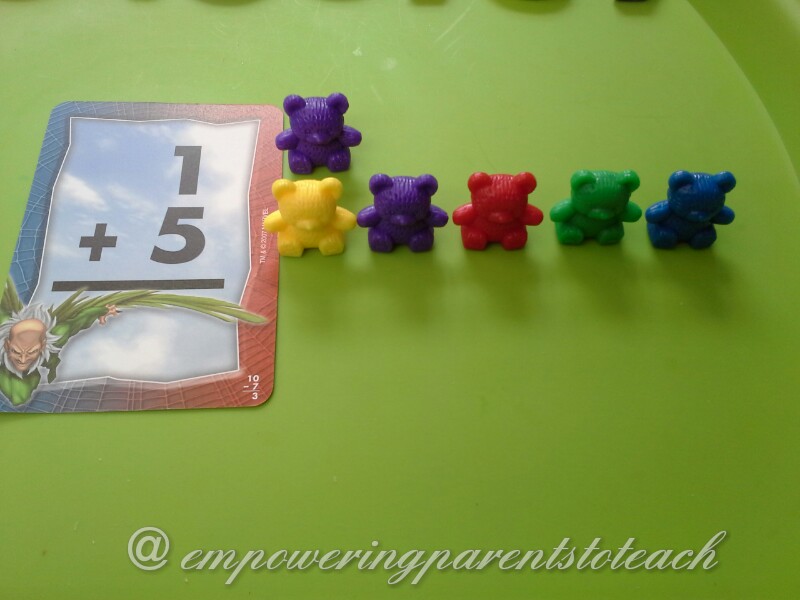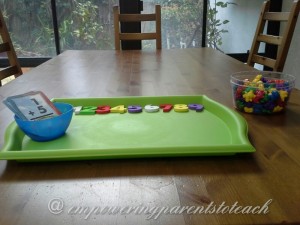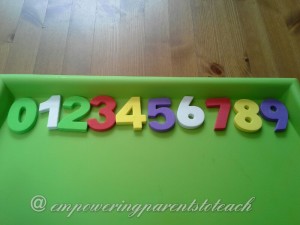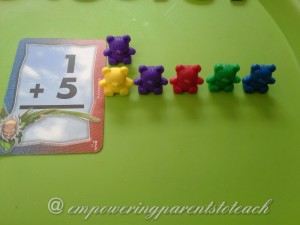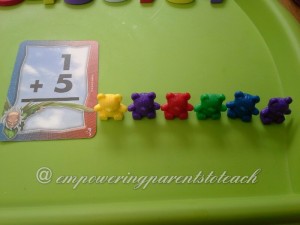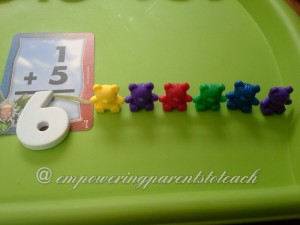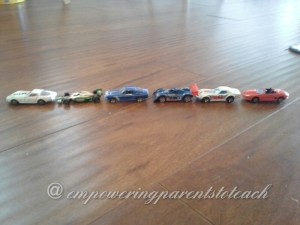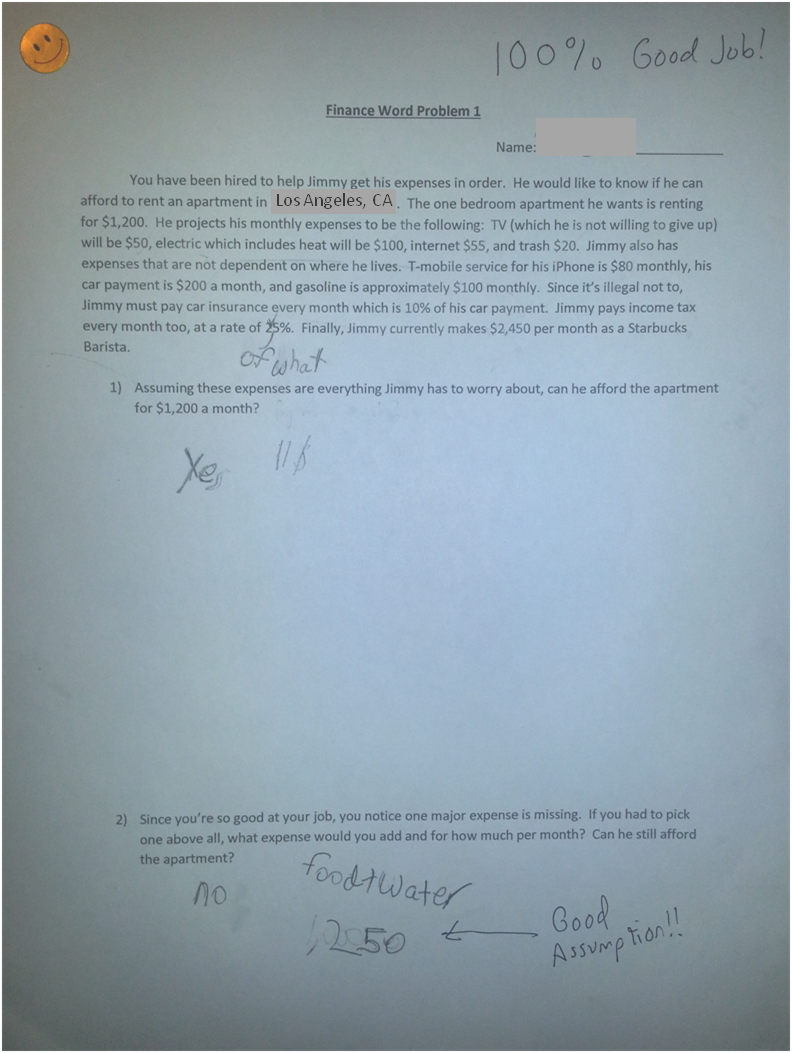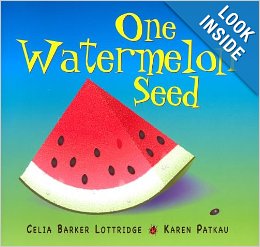Making Math Hands On: Adding With Math Bears
Once your child has developed one to one correspondence, he or she can begin to understand addition. There are many ways to incorporate adding into your day. When you are playing with cars, for example, count how many cars you have. Ask your child, “How many cars would you have if I added two more?” Add two more cars and count them all together. This is how I introduce the concept of adding, in the context of play with real objects.
After the child seems comfortable with the concept, I would add the number representation of the problem along with the manipulatives. Eventually, after a lot of practice, the child can add without the aid of objects. But there is no rush! You want your child to add in a hands-on fashion enough times so that he or she can form mental representations in their minds. Until then, they need the physical representation of the problem. This takes time and practice and it is very necessary.
How to show the physical representation of an addition problem:
The set up:
- Tray
- Math bears on the right side
- Foam numbers 0-9 on top
- A couple of addition problems (based on child’s level) on the left
Step 1: Draw a card with an addition problem.
Step 2: Have the child put the corresponding number of bears for the top number and the bottom number. These two numbers are called addends.
Step 3: Explain that the (+) plus sign tells us that we are to count the bears all together. So if we have one bear and we add five more bears, how many do we have all together? The child may begin to count all the bears. If not, show the child how to count them all together. Sometimes moving them together helps:
I put them all together under the equal sign so that the child gets a visual image of where the answer goes.
Step 4: Have the child find the number that corresponds to the quantity.
Teaching Tip: As your child learns the concept of addition, he or she is also learning math vocabulary. Words like, “plus”, “all together”, “equals”, “sum”, and “addend” are great words to include in your explanation.
The more hands on practice your child has with the concept the better! Often times, we jump too fast into paper and pencil before the child was able to form a solid foundation of the concept. If your child comes home with addition homework and needs your help- break out the math bears!
Linked to: Montessori Monday on Living Montessori Now

